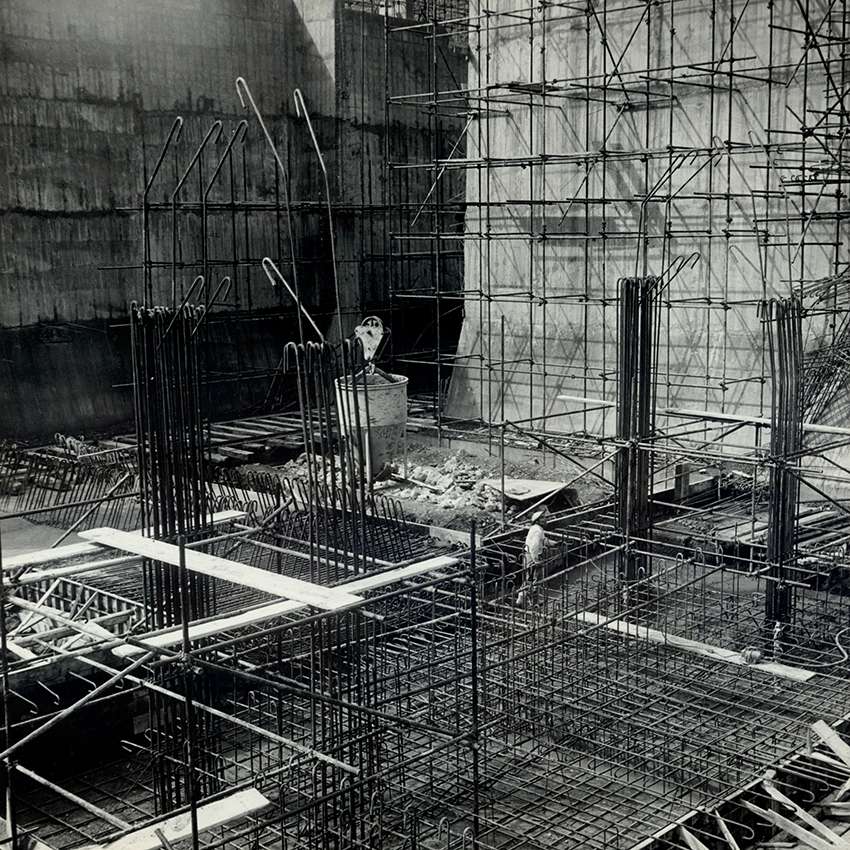The World Bank is an international organization that helps shape the global economy. Founded in 1944, they provide financial help to developing countries so that they may free themselves from poverty. With 189 member nations, they aim to:
- Reduce the total number of people who live in extreme poverty to 3% of the world’s population by 2030.
- Grow the incomes of the poorest 40% of people in every country.
Poverty
According to the United Nations, more than 700 million people, or 10 per cent of the global population, live in extreme poverty, surviving on less than USD $2.15 a day. These figures will continue to rise as a result of the COVID-19 crisis. In fact, COVID-19 is not the only issue increasing the figures. Conflict and climate change also play a role in intensifying poverty. Poverty is characterised by low income. However, there are other aspects to poverty. These aspects include access to services, social protection measures, and the ability to express opinions and make choices. Furthermore, poverty involves negotiation power, social status, and decent work opportunities. Indeed, poverty is connected to human rights and labour rights violations such as child labour, forced labour, and human trafficking.
The World Bank’s Role
The World Bank assists developing countries by offering financial support (such as loans and financial advice). This is done so that developing countries fund important development projects such as dams and emergency relief programs. For example, in 2015, the World Bank contributed USD $1.62 billion to the African Ebola outbreaks. They also supported the vaccine rollouts for 62 countries (and counting) during the recent COVID-19 pandemic.
Without the support of the World Bank, developing countries would likely face higher borrowing costs. Traditional banks often perceive developing countries as risky borrowers. This funding plays a crucial role in enhancing and safeguarding people’s livelihoods, enabling them to lead more fulfilling and content lives. This significance is especially evident in the context of the COVID-19 pandemic, which has severely disrupted global trade and job markets, pushing many individuals into poverty.

Source: Freepik
The World Bank vs. The International Monetary Fund
The World Bank and the International Monetary Fund (IMF) may sound similar, but their roles differ significantly. Both are international organisations established in 1945 as a result of the Bretton Woods Agreement. However, their purposes diverge. The World Bank focuses on financing initiatives aimed at reducing poverty. Conversely, the IMF’s primary mandate is to ensure stability in the world’s monetary systems. They achieve this by:
- Monitoring the economies of member countries.
- Giving assistance to member countries through analysis and policy planning.
- Providing loans, on occasion, to implement policy plans.
This allows them to promote economic growth and financial stability.

Source: World Bank Archives
The World Bank’s Role in Developing Countries
The World Bank helps developing countries by providing them financial and technical support. Indeed, it gives out loans to underdeveloped countries. Also, it offers grants and interest-free credits to help ease their poverty issues. It has helped war-torn countries offer their people basic amenities.
In 2022, the World Bank hosted the Fragility, Conflict, and Violence Forum in Washington, attended by approximately 1000 experts, including governmental and political leaders. The association between the lack of development progress and the challenge of recovering from civil war is frequently made in relation to fragility, conflict, and violence in impoverished nations. However, such challenges can also arise in affluent countries.
The 2011 World Development Report on Conflict, Security and Development was supported to make a significant change in the World Bank Group. The report stated that “strengthening legitimate institutions and governance to provide citizen security, justice and jobs are crucial to break cycles of violence.“
The World Bank is a vital source of financial and technical assistance to developing countries around the world. They are not a bank in the ordinary sense but a unique partnership to reduce poverty and support development. The World Bank Group comprises five institutions managed by their member countries. It provides financing, policy advice, and technical assistance to governments of developing countries. They have set the following goals which could be achieved by 2030.
- End extreme poverty by decreasing the percentage of people living on less than USD$2.15 a day to no more than 3%.
- Promote shared prosperity by fostering the income growth of the bottom 40% for every country.
The World Bank’s Work
The World Bank provides low-interest loans, zero to low-interest credits, and grants to developing countries. These support a wide array of investments in such areas as education, health, public administration, infrastructure, financial and private sector development, agriculture, and environmental and natural resource management. They collaborate with governments, commercial banks, export credit agencies, and private sector investors.
They also provide financing through trust fund partnerships with bilateral and multilateral donors. Many partners have asked the World Bank to help manage initiatives that address needs across a wide range of sectors and developing regions.
The World Bank collaborates with the governments of developing countries and supports relevant sectors such as education, agriculture, energy and extractive, financial sectors, health, industry and trade social protection, transportation, water supply, information and communication.
It manages various projects in each sector by coordinating with the relevant government bodies, tailoring its efforts to the specific needs of developing countries. For example, they have supported COVID-19 vaccines, valued at approximately USD $41 million in Madagascar, in collaboration with the Ministry of Public Health of that country to enhance its immunization services. In the education sector, they have undertaken diverse projects in multiple countries, addressing the specific requirements of each nation.
The World Bank has a project for the world which is called Human Capital Project (HCP). This project provides innovative ways for countries to protect and invest in their people. Produced through careful analysis, strategic thinking, and partnerships, the HCP is proud to share a variety of core documents that help country governments engage in this important agenda.

Source: Freepik.
Organisational Infrastructure of the World Bank
The World Bank also contains several organisational structures under the bank that hold the same mission of eradicating poverty and inequality. They help reduce poverty in different ways, including:
- The International Bank for Reconstruction and Development (IBRD): They lend to middle-income and certain low-income countries.
- The International Development Association (IDA): They offer interest-free loans and grants to economically-struggling nations.
- The International Finance Corporation (IFC): They prepare investments into and advise businesses and governments in developing nations.
- The Multilateral Investment Guarantee Agency (MIGA): They encourage foreign investment in developing nations.
- The International Center for Settlement of Investment Disputes (ICSID): They solve disputes and other issues with investments.
Criticisms of the World Bank
Despite its successes, the World Bank has struggled with several controversies over the years. The most recent of these took place in 2021, with World Bank leaders accused of pressuring staff to inflate the rankings of specific countries.
Another significant issue is that power primarily rests with wealthier, economically powerful nations, such as the US. The US is “the only World Bank shareholder that retains veto power over changes in the Bank’s structure“. This can lead to funds not reaching those in need or, in some cases, causing harm to the very communities and environments they are intended to support. Additionally, to access these loans, countries have to fulfil certain prerequisites to access funding.
Moving Forward
However, the aid provided must consider the needs of developing countries in mind, rather than what developed countries think they are. This should ensure that it helps those who need it rather than saddling them with debt. Therefore, it is up to us to understand that both the giver and the receiver should be helping each other to reach a poverty-free world and increased economic growth.
Why is it essential that we focus on the World Bank?
Focusing on the World Bank is crucial for several reasons. These include:
- Global Poverty Reduction: The World Bank plays an important role in financing and supporting initiatives to reduce poverty worldwide. By focusing on the World Bank, we can contribute to global efforts to lift people out of poverty and improve their quality of life.
- Economic Stability: The World Bank helps stabilise economies, especially in times of crisis. Its financial support and expertise are vital for countries facing economic challenges, ensuring stability in the global financial system.
- Sustainable Development: The World Bank promotes sustainable development by funding projects that address environmental and social concerns. Focusing on the World Bank encourages the adoption of sustainable practices and the protection of our planet.
- Global Health: During health crises like the COVID-19 pandemic, the World Bank has a critical role in funding healthcare infrastructure, vaccine distribution, and public health initiatives. Supporting the World Bank means supporting global health security.
- Education and Infrastructure: The World Bank invests in education and infrastructure projects, providing access to quality education and improving the overall infrastructure in developing countries. This is essential for human development and economic growth.
- Inclusivity: Focusing on the World Bank means advocating for a more inclusive global financial system. It can encourage reforms that give developing nations a stronger voice in decision-making processes.
- Collaborative Efforts: To address global challenges, international cooperation is essential. Focusing on the World Bank calls for collaboration among nations and organizations to work together towards common goals.
achieving the United Nations Sustainable Development Goals (SDGs) and how they Connect To the World Bank’s Work in Developing Countries
In 2015, all United Nations Member States agreed on the 2030 Agenda for Sustainable Development. This plan aims to bring peace and prosperity to people and the planet, now and in the future. The plan’s heart is the 17 Sustainable Development Goals (SDGs), which call for action from all countries, developed and developing, to end poverty, improve health and education, reduce inequality, grow economies, fight climate change, and protect our environment.
The World Bank and the Sustainable Development Goals (SDGs) are closely connected. It plays a significant role in supporting and advancing the goals set out in the SDGs. Here are a few ways in which the work the World Bank does and the SDGs intertwine:
- Poverty reduction is a central focus of both the World Bank and the SDGs. The World Bank’s projects aim to lift people out of poverty, which is also a key target of SDG 1: “No Poverty.”
- Also, the World Bank invests in healthcare and education projects, contributing to SDG 3 (Good Health and Well-being) and SDG 4 (Quality Education).
- The World Bank promotes sustainable environmental practices, aligning with various SDGs related to climate action (SDG 13), life below water (SDG 14), and life on land (SDG 15).
A Thrivable Framework
THRIVE has a framework that uses scientific data to allow anyone, from governments to individuals, to track their impacts and know what actions will have the least impact on our precious Earth. Safeguarding human well-being in all domains is paramount to THRIVE‘s mission. Together, we can make sure everyone has the chance to not just survive, but thrive!
‘Thrivability‘ is the ability of a human, group, or entity to go beyond the boundaries of simply surviving and becoming prosperous and thriving in a sustainable way. The World Bank assists developing countries to become thrivable by offering grants and interest-free loans to help these countries get on their feet.
THRIVE’s logo, a ciambella chart, outlines two important boundaries for humanity to adhere to. These boundaries are – a social floor, denoting the minimum for an entity’s survival, and an environmental ceiling, where too many resources are taken from the environment. Some people living in developing nations live beneath the social floor. In other words, they aren’t receiving the minimum they need to survive. The World Bank helps developing countries to THRIVE with their various financial initiatives.
As part of THRIVE’s commitment to advocate, research, and educate you will find our podcast series, blog, YouTube channel, and webinars valuable resources. For regular updates, you can sign up for our newsletter.























